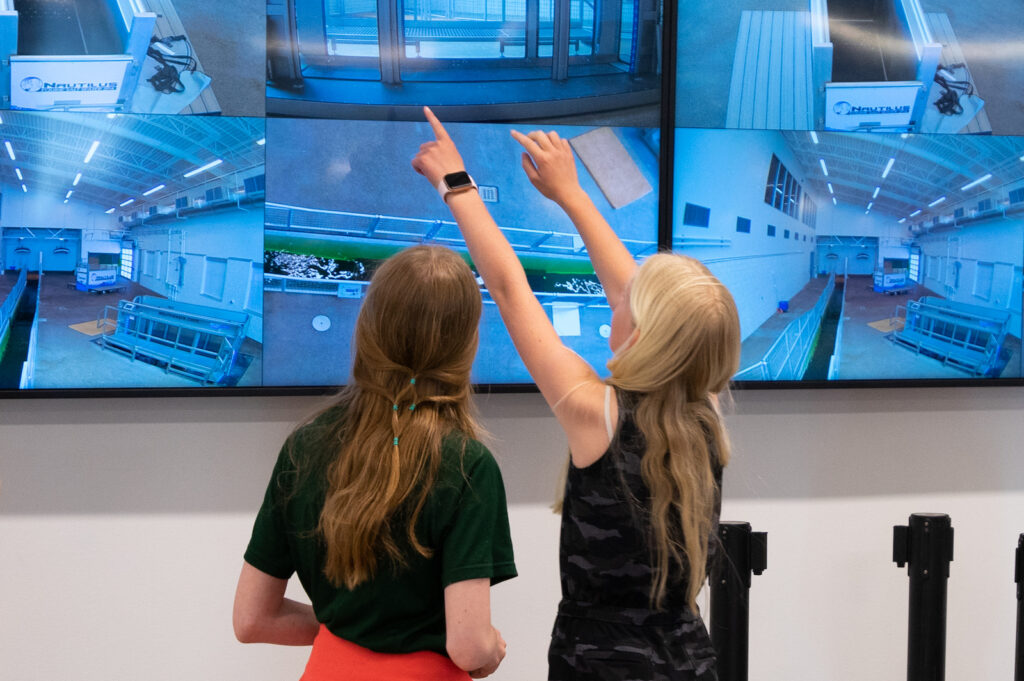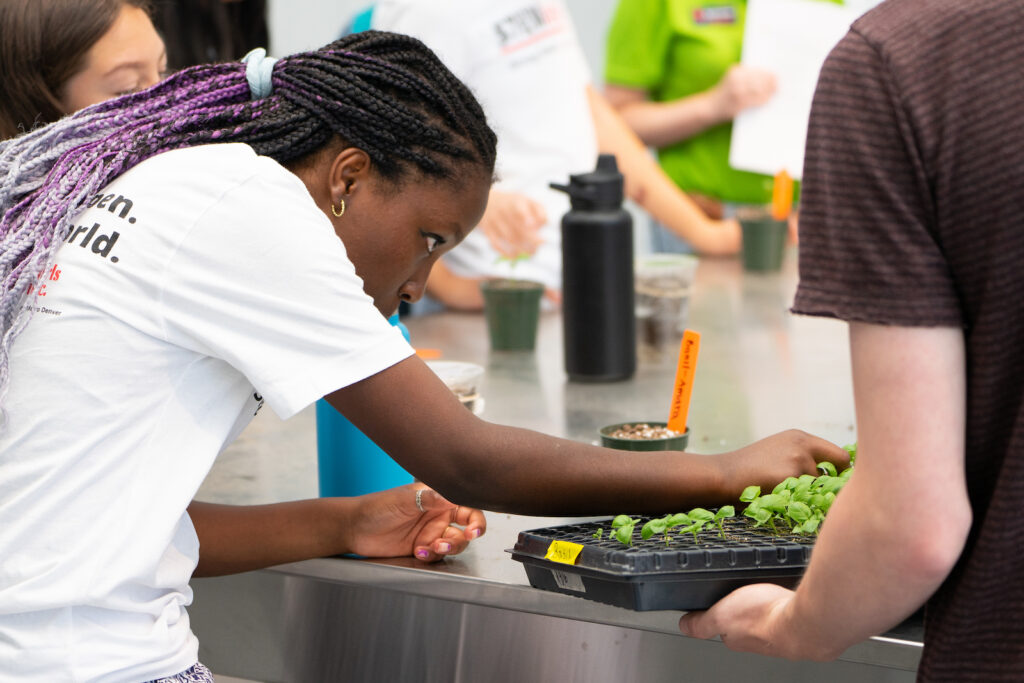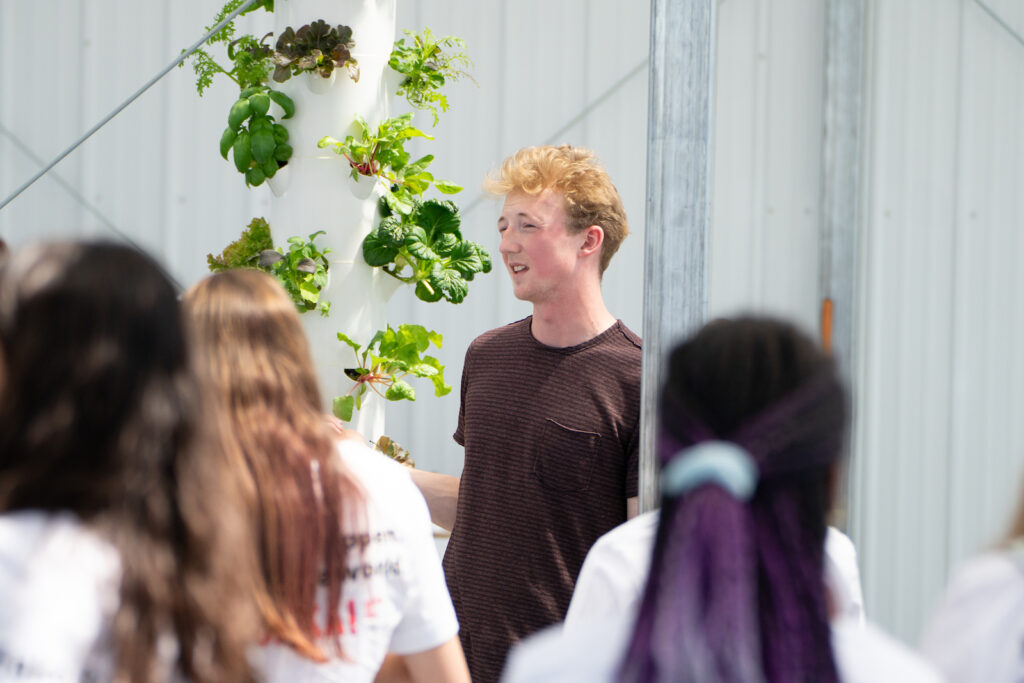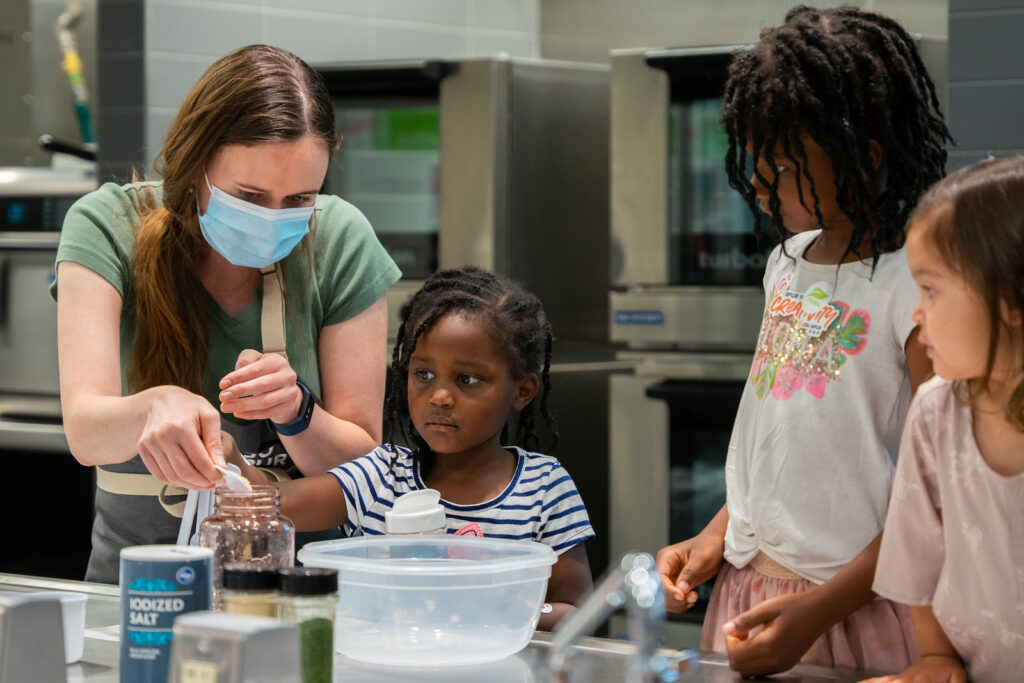
SPURRING INNOVATION
Campus tackles challenges in food, water, and health.
By Tony Frank | July 1, 2022
THIS SPRING, I HAD THE OPPORTUNITY TO JOIN in a panel discussion at the Biennial of the Americas 2022 Mexico City Summit with colleagues from across North America. The topic was innovative agricultural systems and how to grow a sustainable future.
One of the points we discussed is that, too often, we design our organizations and systems around what we grew up with and understand. But those of us making decisions today really shouldn’t be the target audience; bluntly put, we won’t be here to live with those decisions. So, we should always invite future generations to the decision table, expecting that they will have new ways of looking at old problems, some of which may seem overly disruptive to us, but which may well be a polite way of saying, “Your existing systems don’t seem to have solved everything. How about we take a different approach?”


Left: A visiting student replants basil seedlings in the greenhouse at the newly opened Terra building at CSU Spur. Right: Atop the Terra building, visitors learn about vertical farming of specialty crops – a burgeoning approach to growing produce in urban settings. Photography: Kevin Samuelson / CSU System
Top: A visiting student replants basil seedlings in the greenhouse at the newly opened Terra building at CSU Spur. Bottom: Atop the Terra building, visitors learn about vertical farming of specialty crops – a burgeoning approach to growing produce in urban settings. Photography: Kevin Samuelson / CSU System
That’s why we created CSU Spur not so much as a place where knowledge is passed from one generation to another, but as a space for young people to nurture the curiosity, skills, and insights they’ll need to look at old problems with fresh eyes and new perspectives. Developed by the Colorado State University System with $250 million in funding from the Colorado General Assembly, Spur is a free campus that supports public education, research, and community outreach, with a particular emphasis on attracting K-12 students to college and careers in food, water, and animal and human health. CSU Spur doesn’t focus on granting degrees – but we hope it will open doors. In fact, our goal is that every school-age child in Colorado will visit Spur annually, exploring pathways for learning and careers and going home and back to their classrooms inspired and excited about new opportunities.
This is our second special issue of STATE magazine celebrating the opening of the CSU Spur campus. This issue tells you what’s been happening on the campus since it opened to the public and what you can continue to expect in the months ahead.
That’s why we created CSU Spur not so much as a place where knowledge is passed from one generation to another, but as a space for young people to nurture the curiosity, skills, and insights they’ll need to look at old problems with fresh eyes and new perspectives."
— Tony Frank, chancellor, CSU System
Our first building, Vida, opened in January with a focus on animal and human health. Our second building, Terra, highlighting agriculture and food systems, just opened in June. And our water building, Hydro, will come to life in conjunction with the 2023 National Western Stock Show in January.
That timing is fitting, as Spur came into being as part of the redevelopment of the stock show grounds in Denver. The National Western Center is evolving into a year-round site for entertainment, education, and innovation. As one of the five founding partners – along with the Western Stock Show Association, the city and county of Denver, History Colorado, and the Denver Museum of Nature and Science – the CSU System is committed to being the educational anchor at the site, bringing to the center its deep research and academic focus in agriculture, animal and human health, and water resources and sustainability.
These three topics encompass, arguably, the greatest challenges facing our planet and will demand the focus, imagination, and commitment of future generations that we hope to spark through visits to Spur.

Kids learn cooking skills in the commercial kitchen of the Terra building during its opening weekend in June. Photo: Kevin Samuelson / CSU System
CSU Spur also helped sponsor that panel discussion in Mexico, where the robust conversation ranged from new business models for resilient agrifood systems to empowering Indigenous farmers and promoting biodiversity. Given the international representation on the panel, it is clear these are challenges that transcend borders and require collaboration and innovation far beyond what has gone before.
Our goal is that Spur will become a hub that “spurs” just such collaboration and innovation. We truly hope this campus serves to bring together the rural and urban communities of our state, people of all ages and backgrounds, and anyone with an interest in learning and exploring our world and our role within it. The children who today get to explore in our virtual anatomy lab or visit the seedlings in our rooftop greenhouse are the Coloradans who soon will be grappling with the challenges of sustaining, feeding, and healing our planet. We hope Spur will be part of the future they build.
Tony Frank, D.V.M., Ph.D., is chancellor of the Colorado State University System. The System includes CSU in Fort Collins, CSU Pueblo, and CSU Global.
Photo at top: Checking out views of the equine clinic. Photo: Kevin Samuelson / CSU System
SHARE
